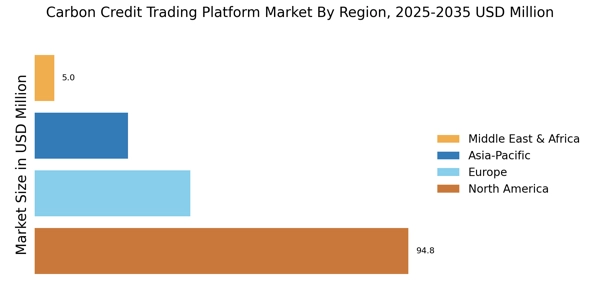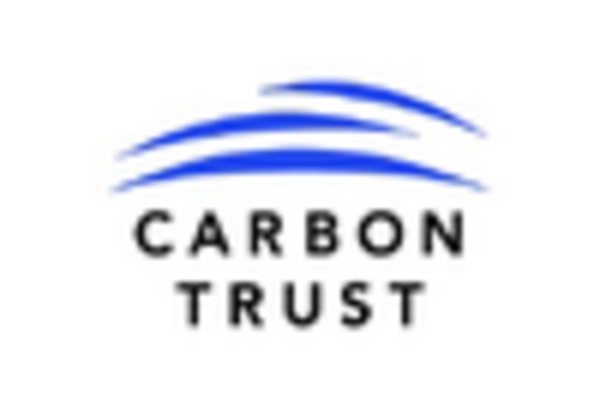Corporate Sustainability Goals
The pursuit of corporate sustainability goals is increasingly influencing the Carbon Credit Trading Platform Market. Many corporations are setting ambitious targets for carbon neutrality, prompting them to invest in carbon credits as a strategy to meet these objectives. Reports indicate that a growing number of companies are integrating carbon trading into their sustainability frameworks, recognizing it as a viable method to offset emissions. This trend is likely to accelerate as stakeholders, including investors and consumers, demand greater accountability regarding environmental impact. Consequently, the Carbon Credit Trading Platform Market is poised for growth as more corporations seek to align their operations with sustainability principles.
Rising Environmental Awareness
The increasing awareness of climate change and environmental degradation is driving the Carbon Credit Trading Platform Market. Consumers and businesses alike are becoming more conscious of their carbon footprints, leading to a surge in demand for carbon credits as a means to offset emissions. This heightened awareness is reflected in various surveys indicating that a significant percentage of individuals are willing to pay more for sustainable products. As a result, companies are actively seeking ways to participate in carbon trading, thereby contributing to the growth of the market. The Carbon Credit Trading Platform Market is likely to benefit from this trend, as more entities recognize the importance of sustainability in their operations and branding.
International Climate Agreements
International climate agreements play a crucial role in shaping the Carbon Credit Trading Platform Market. Treaties such as the Paris Agreement have established frameworks for countries to commit to emissions reduction targets, thereby creating a demand for carbon credits. These agreements encourage nations to implement carbon trading systems, fostering collaboration among countries to achieve collective climate goals. As more countries ratify and adhere to these agreements, the Carbon Credit Trading Platform Market is expected to expand, with increased trading activity and a more dynamic market landscape.
Government Initiatives and Policies
Government initiatives aimed at reducing greenhouse gas emissions are pivotal in shaping the Carbon Credit Trading Platform Market. Many countries have implemented stringent regulations and policies that mandate emissions reductions, creating a robust framework for carbon trading. For instance, emissions trading schemes have been established in various regions, allowing companies to buy and sell carbon credits. This regulatory environment not only incentivizes businesses to engage in carbon trading but also fosters a competitive market for carbon credits. The Carbon Credit Trading Platform Market is expected to expand as governments continue to enforce and enhance these policies, encouraging more participants to enter the market.
Technological Innovations in Trading Platforms
Technological innovations are transforming the Carbon Credit Trading Platform Market by enhancing the efficiency and accessibility of carbon trading. Advanced technologies such as blockchain and artificial intelligence are being integrated into trading platforms, facilitating transparent transactions and improving data accuracy. These innovations not only streamline the trading process but also attract a broader range of participants, including smaller businesses that may have previously been deterred by complexity. As technology continues to evolve, the Carbon Credit Trading Platform Market is likely to experience increased participation and transaction volumes, further driving market growth.


















Leave a Comment